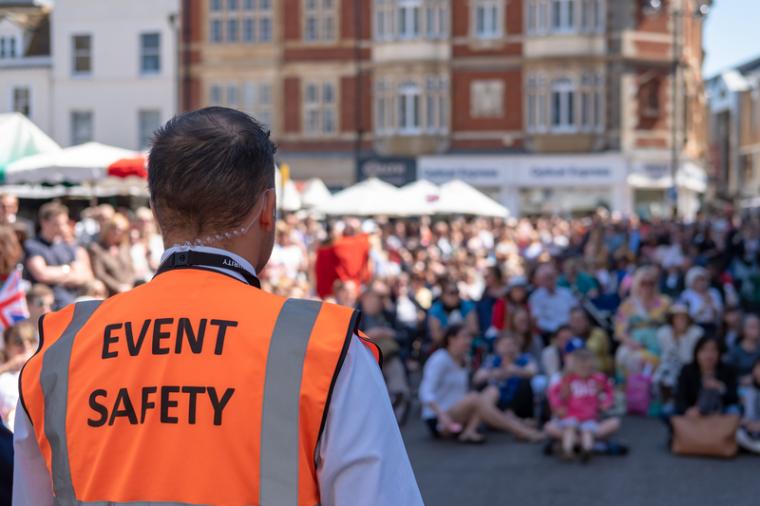

Long gone are the days when it was just assumed going to a youth baseball tournament was nothing to worry about. Large-scale events have always been the target of nefarious actors going back to the Munich Olympics, to the Atlanta Olympic bombing, to the Paris bombing at the Stade De France during, ironically, a friendly between the French and German national teams. Security has been at the forefront of stadium and venue designs for decades and those thoughts are now making their way down to youth and community-based venues and events.
Safety and security for sporting events is all part of the master risk management plan for venues and events. Safety and security play a large part in providing a quality experience for participants, spectators, and staff alike regardless of the size and scope of the event taking place. The safety and security plans are not just focused on outside actors looking to do harm, but also includes issues like weather, power, natural disasters, and a host of other elements that are potential safety risks to people in attendance at these events.
Emergency Management Plans
In particular, venue managers need to plan ahead for weather and natural disaster. The development of a robust emergency management plan is a requirement for every venue. The emergency management plan needs to be a living document that is continually updated based on the given event.
The emergency management plan should cover venue specific details including evacuation routes, fire exits, location of medical equipment like AEDs, locations of emergency command centers and scores of other details.
These should not be publicly accessible documents as it could undermine your security plan. However, these plans should be shared with and incorporated with the emergency management plan of event operators.
Emergency Management Plans should cover topics from physical security, medical emergencies, evacuations, weather and natural disasters, and most recently the additional of active shooter planning.
Physical Security
When we talk about safety and security in the modern era, most people immediately think of an act of terror. While this is always a possibility, the probability of this occurring is relatively low in the grand scheme of the world, and incredibly low for youth and amateur events. However, there are more likely things that venues and event operators still must address.
The first line of security always starts with facility access. Depending on the level of the event or size of the venue facility, access comes with a full range of possibilities. Many venues used by youth sports are public parks and facilities that have limited to no physical barriers to limit access to the venue. This poses a unique set of issues when it comes to operating events at these facilities. Limiting access to public parks, even during events, is not always possible.
Event operators are often forced to add additional staff or utilize different measures to offset the inability to limit access. Controlled access at indoor venues provides a much simpler approach, whereas select doors are used for entry and remaining doors can only be opened from the inside. It is important in these circumstances to have some type of alarmsystem on doors the venue does not want opened unless there is an emergency.
Police or security personnel onsite is also a means to provide physical security to a venue. Venue and event operators need to make an assessment prior to the event to determine if police presence is needed as a deterrent to negative activity.
We have all seen videos of fights that break out on the field of play, or in the stands between parents, or people assaulting referees. It is a major and growing problem in the United States. Simply having police onsite can help lower the chance of these flareups. While they will never fully prevent them from happening, they can expedite ending these situations when they do occur.
Event operators should consider the amount of people, level of competition, history of the event, as well as the layout of the venue when determining the need for police and security, where they should be located, and the number of officers needed.
Weather and Natural Disaster
As much as venue manager and event operators try to plan for every occurrence, sometimes Mother Nature has a different plan. While you can never account for every occurrence that nature can throw at you, a general framework for planning should be in place. Establishing proper evacuation procedures, coordination with first responders, and a medical plan are all important.
It is also key to plan ahead for weather occurrences that have only minor impact but occur quite frequently like lightning. A lightning plan and proper signage and communication is key to providing as safe as possible an environment during a thunderstorm.
Natural disasters are also something you cannot always predict but you still need to plan for them. For those old enough to remember the Loma Prieta earthquake that occurred just before game 3 of the World Series between the Oakland Athletics and San Francisco Giants, there seemed to be no coordinated plan to evacuate the stadium and surrounding grounds. As a result, live television cameras caught images of many people standing around the area, waiting for direction.
Simple things such as looking at weather forecasts to account for rain, high winds, or high heat can all help event operators and venue managers make decisions that will help make a safer environment for visitors. A prime example would be a venue that does not ordinarily allow outside food and beverage may decide to allow bottles of water to be brought in or even provide free bottles of water when there are extremely high temperatures during an event. This simple change may hurt food and beverage sales but could ultimately save a life by preventing heatstroke.
Using Technology
Rapid advances in technology as well as lower costs of implementation have provided more tools for venues and events to use to help provide safe environments.
Handheld wand metal detectors have become so commonplace at sports venues that most spectators do not even think about them any longer. While not a perfect solution, these do provide a low-cost means to provide physical security to a venue.
Mobile ticketing using cell phones has also made it easier and more efficient to facilitate entry to venues. Camera systems have also made great leaps in technology not just from a resolution standpoint but from the use of artificial intelligence to identify specific people or actions that raise an alarm.
Major sports venues and teams have also started using radio-frequency identification (RFID) tags in tickets or apps on phones to help identify and track attendees while in a venue. This type of information helps with security in the venue but also assists venue operators to deploy additional resources when needed to handle long lines, medical issues, find lost children and numerous other uses.
Making Safety and Security a Priority
While it seems overused, Ben Franklin still had it correct when he said, “If you fail to plan, then you are planning to fail.” Venue and event operators who fail to address safety and security at sporting events will inevitably run into a problem.
If you are trying to figure out what to do in the moment, there is a high probability that you will make a wrong decision. Unfortunately, a wrong decision when it comes to safety and security can lead to someone getting seriously hurt or worse. If you haven’t looked at your emergency management plan in a few years, it may be time dust it off and take another look. SDM

